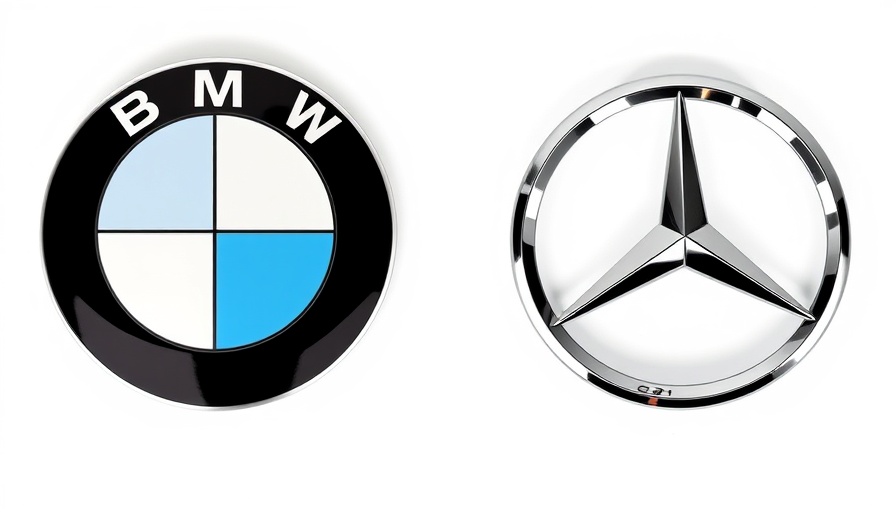
BMW vs. Mercedes: The Premium Sales Showdown of 2025
The premium car market is witnessing a notable shift as we delve into the sales data for the first half of 2025. While all German luxury brands, including Audi, faced declines, BMW has solidified its lead over Mercedes, further expanding the gap that now exceeds 170,000 units.
The Sales Landscape
In the first half of 2025, BMW recorded sales of 1,070,814 units, reporting a slight decrease of 2.3% from the previous year. On the flip side, Mercedes experienced a decline of 6% in total sales, selling 900,000 vehicles. The most striking statistic is in the electric vehicle (EV) segment, where Mercedes's 75,700 sales reflected a staggering 19% drop. Comparatively, BMW's EV sales rose by 18.5%, with 220,540 units sold, significantly outpacing its rival.
Understanding the Trends
Sales across all segments are dipping for Mercedes, particularly in the Entry segment, which saw a 12% slump. This downturn corresponds with a generational shift, as consumers await the arrival of new models like the CLA. Conversely, MINI, a subsidiary of BMW, thrived with a remarkable 17.3% sales increase, contributing to BMW's overall performance.
Due to heightened consumer interest in electrification, BMW is firmly ahead in the EV sector, appealing to environmentally conscious drivers eager for innovative technology. Meanwhile, Mercedes holds strong in plug-in hybrids (PHEVs), but this niche market alone cannot match the electric surge.
Implications for the Future
As we move forward, the widening gap raises important questions about customer preferences and market strategies. Will Mercedes pivot quickly enough to compete in the ever-growing EV sector? Or will BMW's commitment to electric mobility translate to long-term consumer loyalty? As both companies navigate this shifting terrain, consumers and industry watchers alike will be keen to see how strategies adapt and evolve.
This crucial period for premium brands engages not just the existing customer base but also attracts aspiring buyers keen on sustainability in their driving choices. Keeping tabs on these developments ensures car enthusiasts and owners remain informed about their options in this dynamic market.
 Add Row
Add Row  Add
Add 




Write A Comment